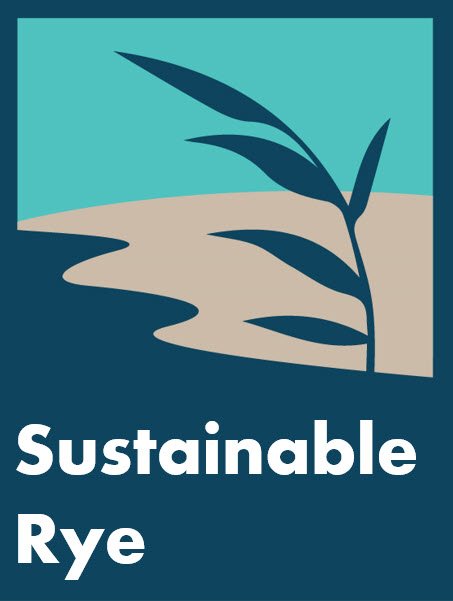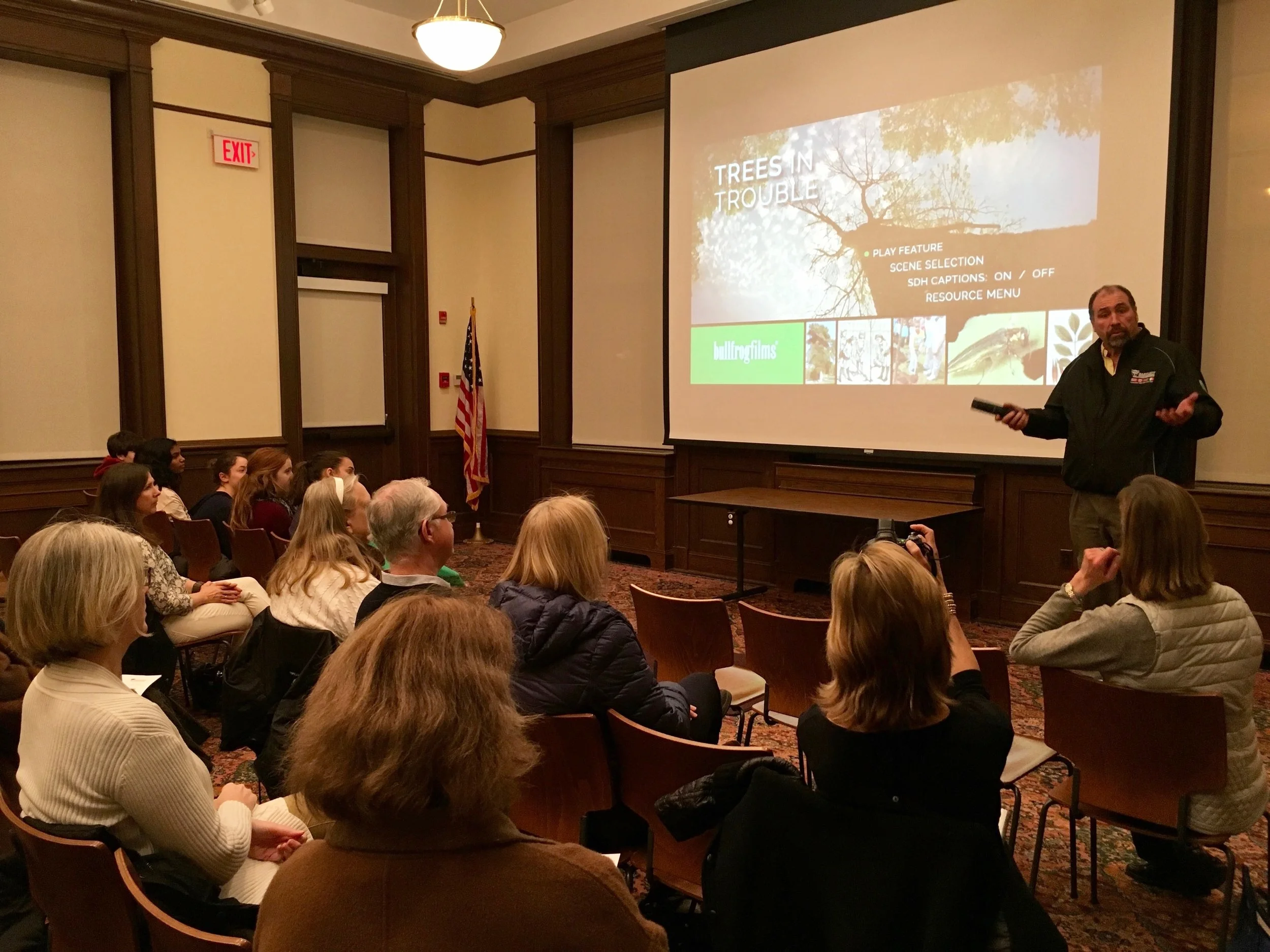The meeting room at Rye Free Reading Room was packed on February 2nd as people gathered to learn about how to protect their trees from the threat of invasive pests. RSC and The Rye Garden Club co-sponsored the film screening of "Trees in Trouble", which was followed by a presentation from Frazer Pehmoeller of Bartlett Tree Experts.
RGC's Sarah Barringer has written an excellent article about the event and what we can do to protect our trees. The article is reprinted in its entirety below.
Want to do more to protect our trees? Consider a donation to the Rye Tree Fund!
Trees in Trouble
By Sarah Barringer, Rye Garden Club
The emerald ash borer (EAB) is on its way to Rye and the effects could be ugly. First discovered in the US in 2001, this tree eating pest arrived accidentally in wood crates from Asia. Since then it has spread to nearly all the states of the US and is estimated to have decimated 50 million ash trees already. This could have a devastating effect on the trees of our area, as white, blue and black ash trees comprise 13%-20% of the tree canopy of Westchester County. The emerald ash borer has been detected in Greenwich, so it is time we in Rye take action to protect our trees.
Frazer Pehmoeller, an arborist with Bartlett Tree Experts, is concerned. Frazer is known by many in Rye as he has been caring for Westchester's trees for the past 28 years. He leads Bartlett Tree's collaboration with the Friends of Rye Town Park and has been caring for the trees there for more than a decade.
In a program co-sponsored by the Rye Garden Club and the Rye Sustainability Committee on February 2 at the Rye Free Reading Room, Frazer addressed the threats to trees in Westchester and how we can protect them. The evening began with the film Trees in Trouble, a short documentary about the effect of the emerald ash borer on the city of Cincinnati. Cincinnati's trees were devastated by the emerald ash borer. What funds were put to the problem went to removing dead trees, with very little budgeted to protective measures. Some streets lost every single tree lining the roadway. Homeowners lost countless trees on their properties.
Frazer Pehmoeller (Bartlett Trees) with Melissa Grieco (RSC Tree Fund chair) and Julia Burke (RGC president)
One of the difficulties with the EAB is that by the time you see the damage to the tree and/or see the insects, it is too late to save the tree. The EAB female lays eggs beneath the bark. The larvae feed under the bark in the cambial tissue of the tree. Their burrowing disrupts the tree's ability to absorb and transfer nutrients and water. By the time this larvae hatches into the bugs one can see, the tree is dying. Preventative measures are a must.
In a lively and informative discussion that followed the film, Frazer detailed what we can do to protect the trees of Rye.
- Get a tree inventory. Have an arborist help you map the trees on your property so you know what you have. This is important for the city to do for civic properties.
- Develop a plan to care for your trees. This means pruning trees, keeping in mind the pests and diseases that can harm different types of trees and treating trees that are susceptible to diseases and pests. As Friends of Rye Town Park have done, it makes sense to develop a long-term tree plan. You can spread the work you need to do over time.
- If you have ash trees, it is time to protect them so they can ward off the EAB. Trees can be inoculated with pesticides that prevent the emerald ash borer from feeding. There is a chemical option and an organic option.
- Plant trees and keep biodiversity in mind. Planting a diverse variety of trees will not only create a healthy ecosystem on your property, but will ensure that some trees remain even when a pest or disease attacks.
- Plant native trees whenever possible. Fraser recommends oaks, the sugar maple, the red maple if you have a wet property, beech trees (but make sure to invest in their care) and the white birch. The ash is a wonderful tree to plant but will need inoculations over time.
RGC president Julia Burke with Frazer Pehmoeller and RSC chair Sara Goddard
Frazer concluded the evening with a reminder of the value of trees. Along with trees' essential roles as habitat and food for animals in a healthy ecosystem, we often take trees for granted and forget that trees provide so much for human health. They are necessary for clean air, for storm water management and for keeping our communities shaded and cool. Time in nature and among trees contributes to human well-being. Trees deserve our care and give back to us in so many ways.
The Rye Sustainability Committee has created a Tree Fund for the city of Rye. Contributions will be put towards planting trees and caring for the trees of Rye. Learn more by visiting RSC's Tree Fund page.




